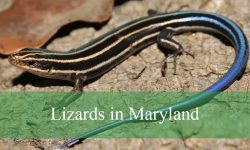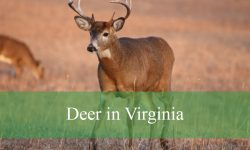When Maine is mentioned, many people immediately think of its beautiful beaches, historic lighthouses, and fresh seafood. However, few know that this state is also home to a variety of diverse and intriguing snake species.
From dense forests to pristine wetlands, snakes in Maine play a crucial role in the local ecosystem. This article will explore the characteristics and identification of the 10 most common snake species found in Maine.
Different Types of Snakes in Maine
Ring-Necked Snake

Ring-necked Snakes (Diadophis punctatus) are widely distributed throughout Maine, with the exception of the northernmost regions. These small, non-venomous snakes can grow up to 18 inches (46 cm) in length. They exhibit a variety of colors, including solid brown, blue-gray, black, or olive, and are distinguished by their striking neckband, which can be yellow, yellow-orange, or red. The head of the Ring-necked Snake is typically darker than the rest of the body, enhancing the contrast with the colorful neckband.
A notable feature of this species is their ventral pattern, which consists of a red or yellow-orange belly adorned with crescent-shaped black spots along the margins. This pattern adds to their distinctive appearance and can aid in identification. Ring-necked Snakes prefer moist environments and are often found under logs, rocks, or in leaf litter. Their preference for hiding and their relatively small size make them less likely to be seen, but their unique coloration and patterns help in recognizing them when encountered.
Dekay’s Brown Snake
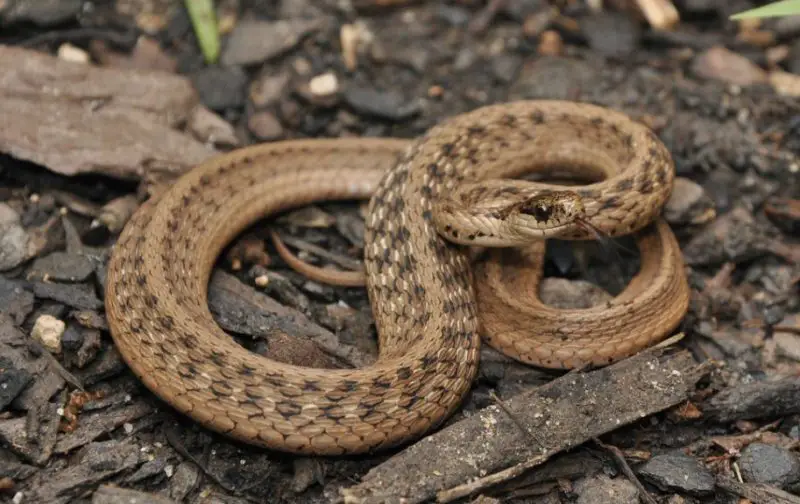
DeKay’s Brown Snake (Storeria dekayi) is a small species commonly found in southwestern Maine. These snakes typically grow to a maximum length of 12 inches (30 cm) and are characterized by their gray to brown coloration. A distinctive feature of DeKay’s Brown Snake is a subtle central stripe running along the length of its body, which is bordered by black spots. This stripe is often not very prominent, but it provides a key identifying trait.
The ventral side of the snake is light brown or pink, with small dots located at the end of their ventral scales. These dots can be another helpful characteristic when identifying the species. DeKay’s Brown Snakes are often found in leaf litter, under rocks, or in moist, shaded areas where they can easily hide. Their small size and cryptic coloration help them blend into their environment, making them less conspicuous to potential predators and observers alike.
Common Garter Snake
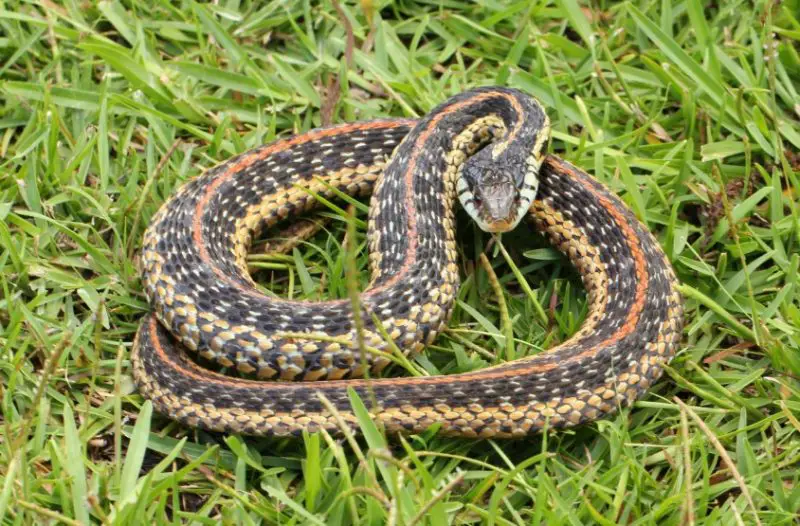
Common Garter Snakes (Thamnophis sirtalis) are widely found throughout Maine and can reach lengths of up to four feet (1.2 meters). These snakes exhibit a broad range of colors, including blue, gold, red, orange, black, brown, and green, making them quite diverse in appearance. Their coloration can vary significantly among individuals, with some displaying striking patterns of stripes or spots.
Typically, Common Garter Snakes are most active during the mornings and late afternoons, when they are seen hunting for prey or basking in the sun. They are social creatures and often share dens with other garter snakes, particularly during hibernation periods. Despite being non-venomous to humans, they possess a mild toxic venom that can cause allergic reactions such as swelling, burning, and itching if bitten.
These snakes favor habitats like forests, meadows, and areas near water, where they find ample food and suitable conditions for shelter.
Northern American Racer
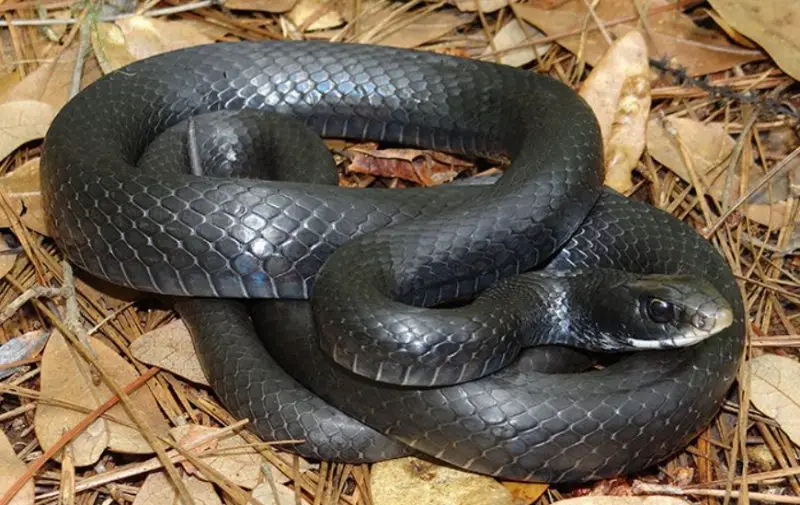
The Northern American Racer (Coluber constrictor), also known as the black racer, is a swift and agile snake found primarily in the southern region of Maine, where it is considered endangered. These snakes can grow up to five feet in length and are notable for their sleek, black or blue-black coloration. Their bellies are lighter, often dark gray or blue, and juveniles start with a lighter color that darkens as they mature.
A distinguishing feature of the Northern American Racer is its white throat and chin, which contrast with the darker color of the rest of the body. They are harmless to humans, though their speed and agility can make them challenging to observe in the wild. Active primarily during the day, these snakes prefer open habitats such as fields, pastures, and the edges of forests, where they can hunt and bask.
Ribbon Snake
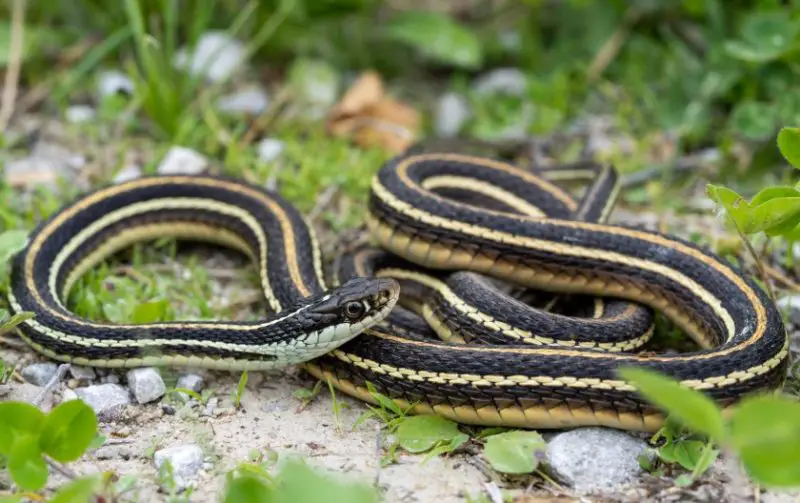
The Ribbon Snake (Thamnophis saurita) is a non-venomous species commonly found in the central and southern regions of Maine. This slender snake can grow up to 35 inches (89 cm) long and is easily recognizable by its dark brown body with a distinct yellow stripe running along its length.
Ribbon Snakes are semi-aquatic, thriving in high-vegetation areas near marshes, streams, lakes, and rivers. They are adept swimmers and often take to the water to escape potential threats. When approached, these snakes will swiftly dive into the water and swim away. Their preference for moist habitats and their characteristic yellow stripe make them relatively easy to identify in their natural environment.
Eastern Milk Snake
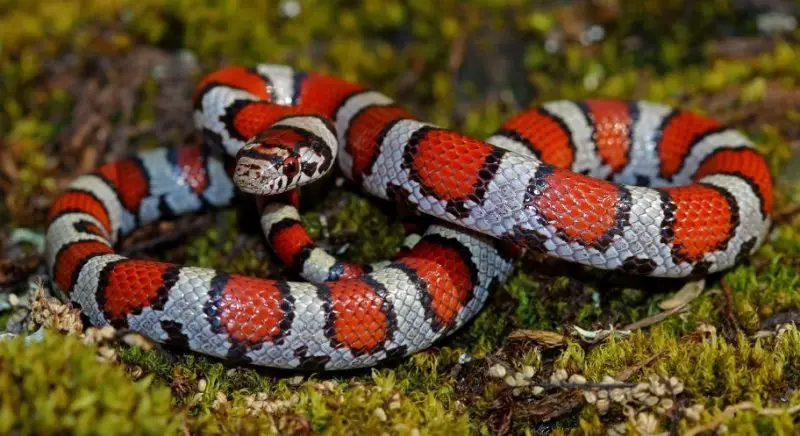
The Eastern Milk Snake (Lampropeltis triangulum) is a striking species found in the central and southern regions of Maine. These snakes can reach lengths of up to 36 inches (91 cm) and are distinguished by their smooth, shiny scales. Their coloration typically features a brown base with black borders, and some individuals exhibit red or reddish-brown areas. A key identifying feature is the pattern of up to five black-bordered brown patches running along the snake’s body, set against a background that can be tan or gray. Additionally, Eastern Milk Snakes have a distinctive black and white checkered pattern on their belly.
These snakes are known for their docile nature, which makes them popular among reptile enthusiasts. Due to their attractive appearance and manageable temperament, Eastern Milk Snakes are frequently bred in captivity and are a common choice in the pet trade. Their varied coloration and pattern, combined with their calm disposition, make them relatively easy to identify and handle, whether in the wild or in captivity.
Smooth Green Snake

Smooth Green Snakes (Opheodrys vernalis) are small, slender snakes found in the central, southern, and eastern regions of Maine. These snakes typically reach a length of up to 26 inches (66 cm) and are noted for their striking light green coloration. Their smooth, shiny scales contribute to their distinct appearance, and their belly is usually white or yellow, providing a pleasing contrast to their green dorsal side.
Juvenile Smooth Green Snakes start out with an olive green or brown hue, which gradually changes to their characteristic green as they mature through their first shed. An interesting feature of these snakes is their red tongue with a black tip, which they use to detect scents by flicking it in and out of their mouth. This behavior helps them sense their surroundings and locate prey. Their smooth scales, vibrant green color, and unique tongue make them easily recognizable, though their small size and secretive nature mean they are often overlooked in their natural habitats.
Common Watersnake
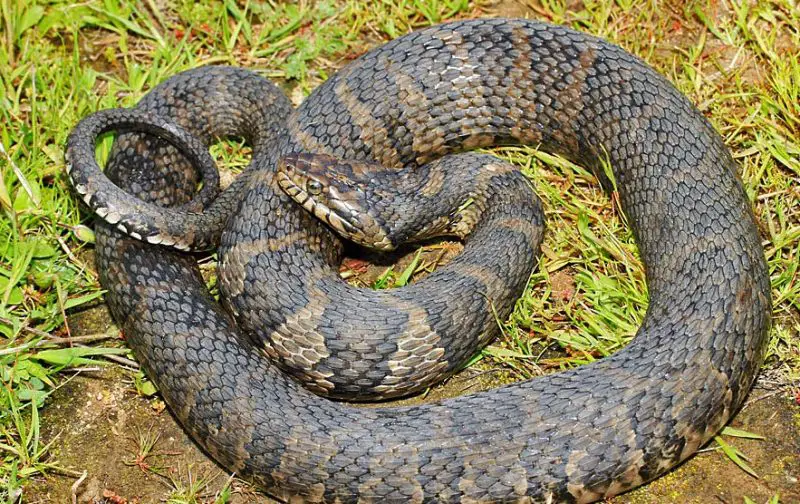
The Common Watersnake (Nerodia sipedon) is a widespread species found in the southern, eastern, and central regions of Maine. These snakes can reach lengths of up to 4 feet 5 inches (135 cm) and exhibit a diverse range of colors and patterns. Their body coloration can vary significantly, including shades of red, black, brown, gray, or a combination of these colors. They often display dark crossbands around their neck and dark patches along their body, contributing to their distinctive appearance.
The belly of the Common Watersnake can be gray, yellow, or white, frequently marked with red or black crescent-shaped patterns. This variability in coloration and pattern helps them blend into their aquatic environments, such as swamps, marshes, and slow-moving rivers. Despite their potentially intimidating appearance, Common Watersnakes are completely harmless to humans.
Red-Bellied Snake

The Red-bellied Snake (Storeria occipitomaculata) is a species found throughout Maine, though it is less common in the northernmost regions. These small snakes typically reach a length of up to 12 inches (31 cm) and display a range of colors, including olive, tan, chestnut, gray, black, or brown. One of their most distinctive features is the three yellow spots on their head, which stand out against their varied body color.
Their belly is striking coral to brick red, creating a vivid contrast with their dorsal coloration. The snake’s body often features a striped pattern, formed by varying shades of its primary color. Red-bellied Snakes are known for their preference for moist habitats such as gardens, woodlands, wetlands, and flower beds. They are commonly found hiding under rocks and logs in these areas, which provide shelter and maintain the humidity they require.





